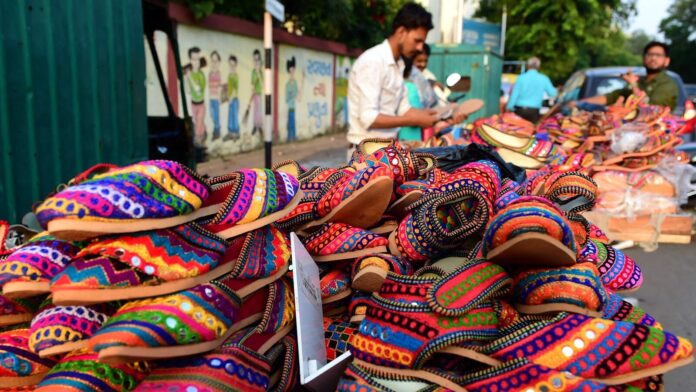He spoke of how street vendors are now able to take collateral-free loans under this scheme, and how, enabled by fintech and based on digital transaction records, they will keep getting more loans to expand their business. His speech acknowledged the contribution of street vendors to the economy.
In the process of rebuilding urban spaces, thousands of small businesses and other informal dwellers get displaced, leading to the breakdown of various communities and livelihoods. Street vendors are one such vulnerable group. In developing countries, authorities tend to regard street vending as unlawful and disruptive.
Their belief that strict law enforcement is necessary to keep public spaces clear for pedestrians and vehicles tends to keep street vendors under the constant threat of eviction. Fortunately, with recent policies, especially the PM SVANidhi scheme, the discourse on India’s street vendors has seen a significant shift, with the focus now on drawing them into the formal economy.
In 2017-18, the Periodic Labour Force Survey (PLFS) recorded 2.7 million street vendors, a figure that grew to 5.9 million in 2022-23. This increase, largely across cities and towns, indicates that they are not just contributors to local commercial activity, but also key players in the larger economic system.
As per PLFS 2022-23, India’s street vendor composition shows that the bulk are concentrated in Maharashtra (20.8%), Karnataka (9.2%) and Tamil Nadu (7.9%), while Union territories (UTs) have the most street vendors as a proportion of the state/UT’s workforce, led by Chandigarh (4.8%), followed by Delhi (2%) and Goa (1.9%).
On delving deeper into the composition data of street vendors, some disparities are evident in the average wages earned. For instance, the average annual wage of street vendors in Chandigarh and Maharashtra are ₹1.5 lakh and ₹1 lakh, respectively.
As a broad observation, street vendors in states/UTs where they are in high concentration earn less than those who operate in states/UTs where they show lower density but form a larger share of the workforce. In such a scenario, PM SVANidhi offers crucial support by facilitating financial access, regardless of the market conditions in their regions.
The scheme was launched by the Centre in 2020 to provide collateral-free working capital loans to street vendors whose livelihoods were impacted by pandemic lockdowns. The principal objective was to help them resume their businesses, but it was also designed to reward digital transactions even as it incentivized regular repayments.
In a span of four years, the scheme has sanctioned ₹12,739.6 crore worth of loans to 6.5 million beneficiaries from a pool of 11.2 million applicants. This is quite commendable.
In addition, the recent 2024 budget discussion on developing 100 weekly street markets in selected cities is another step towards integrating street vendors into the formal economy. These initiatives highlight their potential to increase their economic contribution with adequate support.
While the PM SVANidhi scheme has done well to empower street vendors, it also illustrates complexities in addressing their problems and implementing solutions. Potential beneficiaries lack awareness of it and efforts to reach out to all who could benefit should be stepped up.
Proper identification of street vendors is a critical step towards enhancing the PM SVANidhi’s scheme’s success. This requires active participation by state governments and urban local bodies, which is easier said than done.
Street vendors mostly operate in a ‘grey’ zone of the law, with their claimed right to work often in conflict with the rights of other citizens to freely use public spaces. From a planning perspective, permits of licences issued for street vending are not just simple decisions by a city administration, but a tool that keeps these conflicts under control.
The crux of the matter is that regulation of street vending is not as simple as merely enforcing rules of conduct; it entails a proper interpretation of rights provided by India’s constitutional framework, including the right to work. It also requires a delicate balance between legal aspects and the reality of social and geographical circumstances.
For example, cities must come up with strategies aimed at protecting the income-generating activities of street vendors and also address the interests of other residents who need access to shared spaces. This aspect is a big challenge that complicates the disposition of public policy to street vending.
Legal norms should not only enable street vendors to make a living this way under appropriate rules and regulations, but should also look at the urban environment within which they operate.
The challenge posed by street-vending is a microcosm of India’s broader one of urban governance, which also requires innovative thinking and useful solutions.
The PM SVANidhi scheme has played an exemplary role in laying out a path, and it should be replicated as a model for further public efforts to draw informal businesses into the formal sector.
To this end, it is indeed reassuring that fintech and other innovative solutions can be leveraged to help street vendors thrive and not just survive in a post-pandemic world.
The authors are, respectively, chair and researcher at the Institute for Competitiveness
#SVANidhi #idea #lays #model #marginal #vendors #formal
